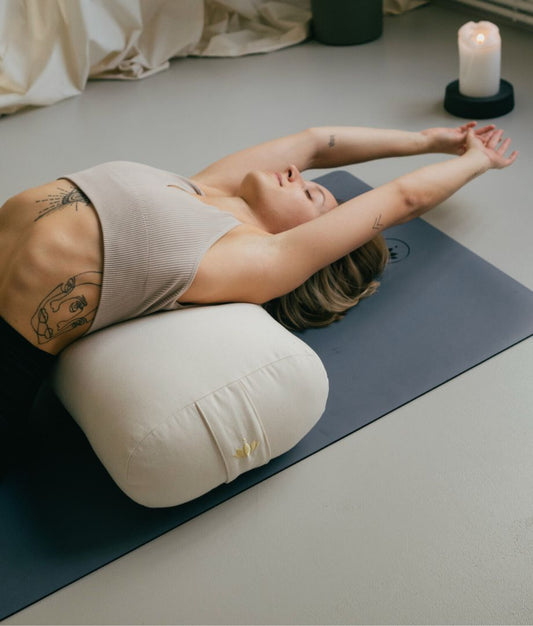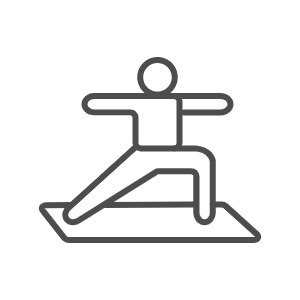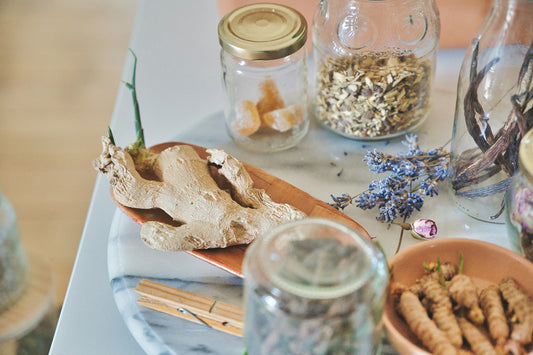
Set-Offers
Save when you buy a set
Shopping cart
Your shopping basket is empty
Yoga

Meditation
Bundles

|

Autumn and winter can be a challenging time for many people, as the body becomes more susceptible to illness and moods are often depressed. However, yoga and Ayurveda can play an important role in promoting wellbeing and health during this time of year.
Especially when the first cold is approaching and you feel that the immune system now has to work harder, easy-to-implement tips and applications from yoga and Ayurveda can serve as natural support.
Ayurveda looks at people from a very holistic perspective and very individually based on their dosha constitution. The traditional knowledge of Ayurveda and yoga can be easily and practically integrated into modern everyday life. In this way, healthy routines can be established that strengthen you and make your health more resilient.
According to Ayurveda, colds and symptoms arise from an imbalance of the 3 doshas (Vata, Kapha, Pitta) in the body. This imbalance of the 3 bioenergies causes a weakening in the body system, so that, for example, the immune system is weakened and digestion does not run optimally and toxins and pollutants accumulate in the body (Ama).
The cause of a cold is predominantly an imbalance of Vata and Kapha , which are disrupted by the influence of cold. In Ayurveda a distinction is made between “Vata cold symptoms” and “Kapha cold symptoms” .
Autumn and winter are the classic seasons for colds and similar ailments. The cold season in particular is a time of rest and retreat, which is why everyday stress, diet and lack of exercise are other important factors in whether our body gets through the cold season well or not.
Vata cold symptoms:
• dry mucous membranes
• Cough and hoarseness
• Sore throat
• Tension pain
• dry cough
This is what Ayurveda recommends:
• slightly moist and oily but easily digestible foods, e.g. vegetable stews or soups. The Vata dosha needs grounding, stability and calm.
Kapha cold symptoms:
• Mucus formation
• mucous cough
• Feeling of heaviness
This is what Ayurveda recommends:
• slightly stimulating foods with spices such as ginger or pepper. Pepper also lowers Kapha and supports the healing process, especially for typical Kapha symptoms.
When a cold sets in, it is always advisable to change your diet to a light diet and eat warm and nourishing vegetable soups and stews with classic Ayurvedic spices.
In particular, a warm ginger tea with turmeric made from a fresh ginger-turmeric decoction with honey or golden milk promote the Agni (digestive fire), which tends to be weakened at the beginning of a cold. Tulsi tea is also on the list of herbs and drinks that promise relief during a cold.
Ayurveda also recommends avoiding dairy products, cheese, cream, etc. (everything that forms mucus) and basically all ama-forming foods (waste products) (wheat products, dairy products, pseudo-grains, etc.).
Routines from Ayurveda and yoga prevent colds and strengthen the immune system, for example, yogic breathing exercises cleanse the lungs, warm lemon water in the morning gently stimulates the metabolism and practices such as yoga nidra help the body to regenerate.
Yoga not only has a beneficial effect on the body, heart and mind, but is also a natural immune stimulator. Yoga poses or asanas increase the circulation of lymph fluid , which moves through the body picking up bacteria and viruses and filtering them through the lymph nodes. Yoga lowers stress hormones, which can lead to a weakened immune system. It strengthens the lungs and respiratory tract, supplies the body with oxygen and stimulates the internal organs so that they function optimally and protect the body.
It is important to practice mindfully and consciously ! Yin yoga is very suitable for this; only practice asanas and yin yoga postures that are good for you. Gentle stretching and supported , seated forward bends gently awaken the body when you feel stiff and tense due to a cold. Gentle backbends open the chest and breathing spaces, for example, supported fish.
If you have a sore limb or headache, you should skip any asanas that make you strenuous, and if you have a fever or high temperature, you should not practice yoga at all. Pranayama helps to cleanse the lungs and clear the mucous membranes, e.g. gentle Kapalabhati or Brahmari bee breathing.
You can also look at the cold yogically, as an invitation from your body to take plenty of rest and cleanse. Give yourself enough rest and don't feel guilty if you have to cancel appointments. Your body is now sending you a signal that it is time to slow down and take a break from everything.

I studied psychology because I love people, their experiences and behavior interest and fascinate. In particular, I have always been interested i...
Continue reading
As a dosha balance coach, I combine the millennia-old knowledge of Ayurveda and yoga with the current knowledge of intestinal health and our moder...
Continue reading
There are no comments yet. Be the first to leave a comment!